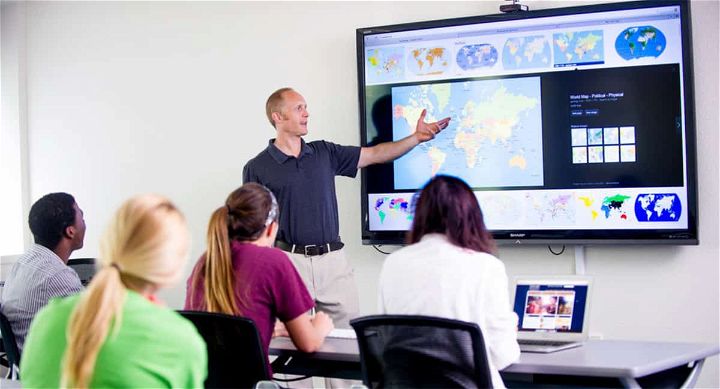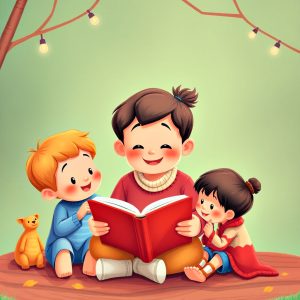Why is it just as crucial to learn through imagination as it is to acquire knowledge? Why should both teachers and learners utilize their imagination when learning? Let’s explore how imagination and knowledge mutually support authentic learning.
Imagination involves creating new ideas or concepts of objects that are not perceived by the senses. Conversely, knowledge encompasses factual information and understanding. It includes the skills gained through experience or education – the theoretical or practical comprehension of a subject. How do these contrasting ideas synergize in the learning process?

What is Creative Exploration?
Imagination is alive and well. It’s often mistaken for creativity, but they are distinct. Imagination allows us to conceive of things that aren’t presently real or within reach, while creativity enables us to give purpose to our imaginings. Some argue that we’re transitioning from the information age to the imagination age. Imagination isn’t dead; instead, it’s transforming into something as awesome-inspiring as possessing superpowers.
In the imagination age, we possess the power to collectively envision and shape the future we desire before it slips away. This goes beyond creating utopian ideals to comfort ourselves amidst challenges.
The Role of Technology in Learning
Below are some roles it plays:
- Enriching Classroom Instruction: Educators can utilize technology as a valuable tool to deliver dynamic classroom instruction. Interactive whiteboards, digital projectors, and educational software foster active student engagement.
- Personalized Learning: Technology enabled personalized learning through Learning Management Systems (LMS) and adaptive learning platforms in traditional schools. Educators can tailor lesson plans to meet student’s individual needs and pace, promoting inclusivity and effective learning. Personalized learning approaches effectively foster positive thinking in children.
- Access to a Vast Pool of Information: The internet provides students and educators with access to a vast pool of knowledge. Even Netflix can provide a lot of valuable data for training, it’s just important to find the information correctly. Students also need to be able to bypass regional restrictions.
Development of Creative Thinking and Personalized Learning
Encouraging imagination-enabling activities such as self-reflection, creative writing, listening to inspiring instrumental music, immersing themselves in creative films or books, and more can also foster a creative mindset.
Good schools implement various creative learning techniques. These methods foster imagination, critical thinking, and exploration. Here are some of the methods:
- Conjecture. Students are challenged to guess missing information, encouraging imaginative thinking.
- Hypothetical questions. Students delve into imaginary scenarios, sparking endless thoughts and possibilities.
- Open-ended questions. Instead of limiting answers to “yes” or “no,” students are encouraged to think outside the box. Greensprings School, for instance, uses different thinking hats to promote this type of thinking.
- Abductive reasoning. Science-related disciplines utilize this method to form theories that explain observations and draw conclusions.
- Abstraction: Ideas that differ from reality are used to explain complex concepts, serving as models or simplified theories.
- Improvisation. Games and exercises stimulate the brain to improvise scenarios, enhancing learning in various subjects like music, sports, and public speaking.
- Debates. Students take sides and develop arguments, improving their confidence and communication skills.
- Thought Experiments learners are encouraged to communicate information through the design of thought experiments.
- Storytelling is a creative approach where learners are tasked with telling fictional stories to illustrate problems for better understanding.
Balancing Quality Education And Creative Learning
To achieve this equilibrium, it is essential to incorporate the following methods and algorithms:
- Visual Reflection: Facilitate deeper understanding and boost creativity by encouraging visual reflections such as pinning learning materials on a board or creating illustrations.
- Hands-On Learning: Actively involve learners in the educational process to enhance comprehension and retention, steering away from conventional methods.
- Classroom Humor: Infusing humor into teaching fosters an engaging and interactive learning environment. Utilize cartoons, puns, and relevant jokes to make the learning experience enjoyable.
- Assignment Formats: Empower students to choose the format for their assignments, fostering creativity while keeping them mentally engaged.
- Encourage Discussions: Promote meaningful discussions where students can express their opinions and enhance their communication skills.
- Color Schemes: Utilize creative and stimulating ways to incorporate colors into classrooms, such as displaying quotes and wise sayings, or highlighting important information in lesson notes. This approach aids in faster information absorption.
- Inspirational Posters: Inspire students to unleash their creative potential by showingcasing motivational quotes and posters throughout the school premises. Encourage them to contribute their favorite quotes or sayings to decorate the walls.
Conclusion
Creativity suppression leads to issues in the classroom. Students become disinterested and disengaged, exhibiting behavioral problems or losing focus. On the contrary, fostering an environment that prioritizes activity and hands-on learning brings about positive transformations. Unfortunately, our current education system, centered around test preparation, rote memorization, and standardized curriculum.
Students have been conditioned to conform and perform rather than question and explore. Expanding our creative horizons doesn’t have to involve excessive spending and it won’t detract from our professional responsibilities. Ultimately, the investment in nurturing creativity yields happier students who thrive in a supportive educational setting.




